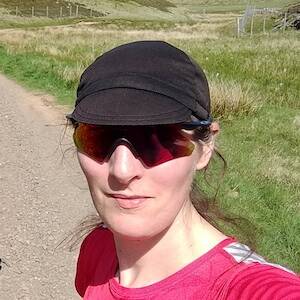Mysteries and histories
We had a bit more snow last night and I spent quite a chunk of time clearing driveways and putting grit down. It was an excuse to get some fresh air and work up some body heat. The sun was out too, so I wandered in my wellies and snapped this view of the Pentland Hills. I think it's interesting for two reasons.
I have never seen a cloud formation like this. The top was perfectly flat, with an almost roll-cloud appearance below, and below that, squalls dumping snow or graupel or whatever the clouds felt like. It stretched all the way along the line of the hills, for miles and miles. I assume it was some kind of temperature inversion.
I don't much care for snow these days. It's too much like hard work, with town too far away to be dealing with extra layers for the inbound journey and cast off and carried for the more arduous homeward journey. Infrasisters did a group ride in town this evening – the intent is good – but it's -4ºC here and I'm just not that into it, especially having not fitted my spiky tyres yet and I'm not a fan of losing all my body heat while group riding at 5mph.
But the snow does reveal the rig-and-furrow cultivation features, bottom right of the photo. They are taken to have first been formed in the medieval period and lasting until the end of the 18th century when better land became available for farming, and the earlier areas reverted to pasture. Rig-and-furrow was a characteristic of ploughing a fairly narrow strip of land, back and forth, starting from the centre line and working out in a sort of circle. Over the seasons and years more and more soil would be turned towards the centre line, forming a ridge; between each strip of land the soil was thus removed, forming furrows. The furrows helped the land drain, so you only cultivated like this on slopes. The rig-and-furrow features on the Pentlands have a sort of S-bend shape, which was because your team of oxen, plus the big plough, was itself quite long, so as each pair reached the end of your strip you steered them off to the left along the edge of the land; once your rearmost oxen crossed the finishing line you turned them all to the right, and right again, in order to start ploughing back along the strip. The length of the strip of land you ploughed was how far your team of oxen could plough without resting – one furrow long, hence furlong. Eventually they standardised it as 40 rods, or 220 yards. The rod was reputedly derived from the length of the stick you needed to wield to control your team.
Frankly, given the slopes of the Castlelaw, those oxen must have been eating spinach every meal.
- 4
- 1
- Nikon D40
- 1/323
- f/8.0
- 112mm
- 200

Comments
Sign in or get an account to comment.


